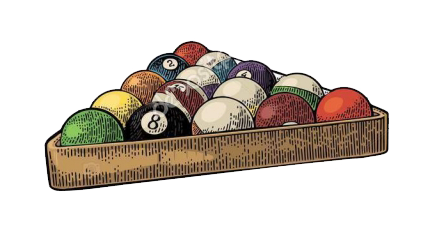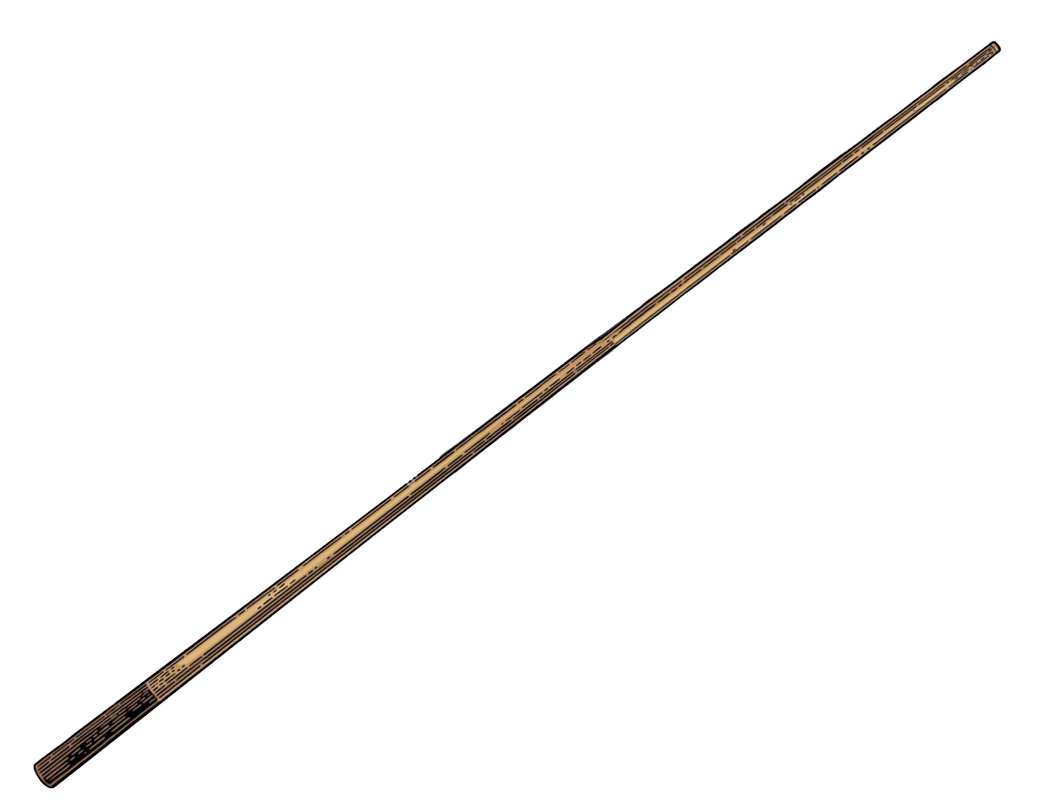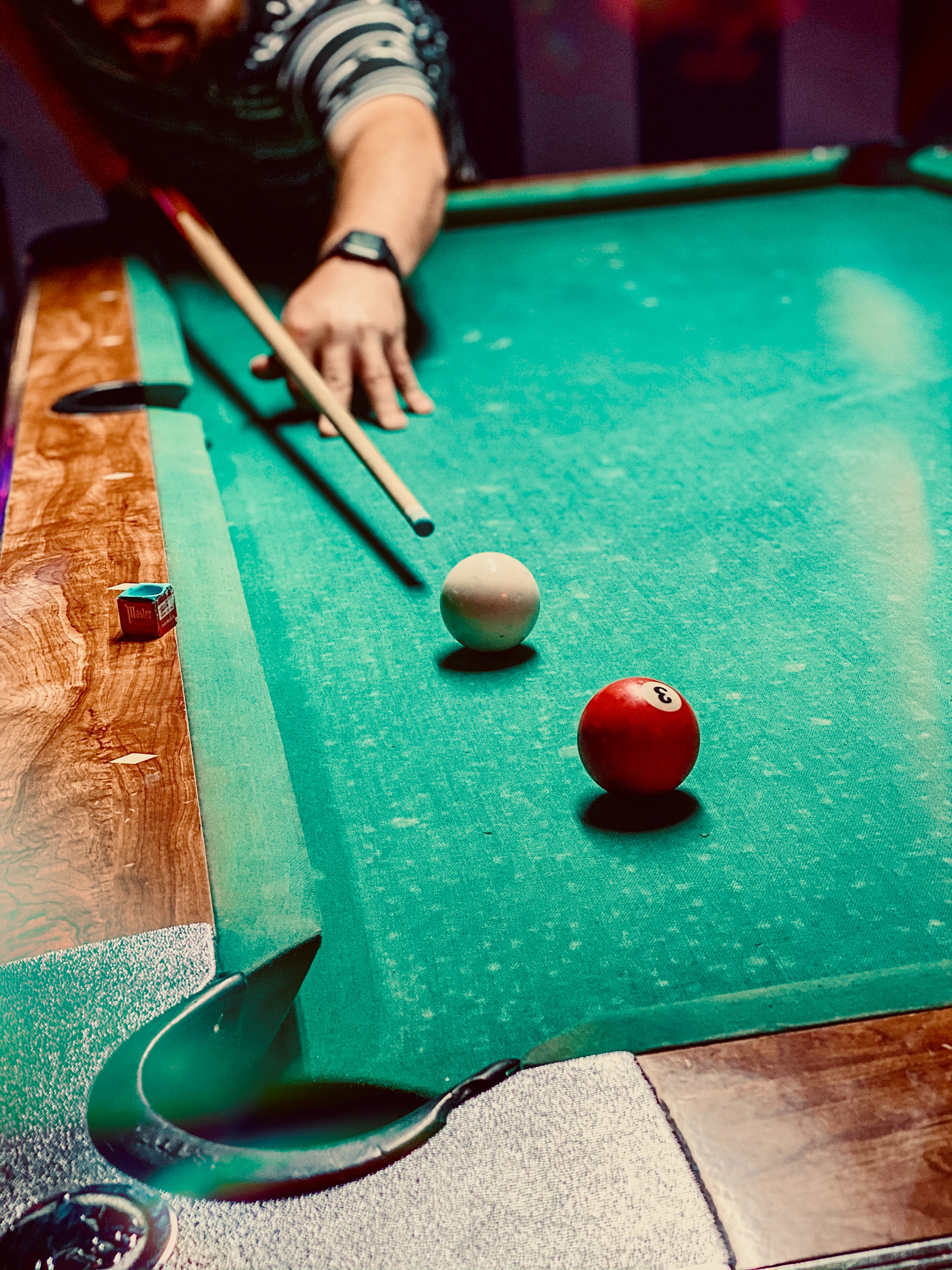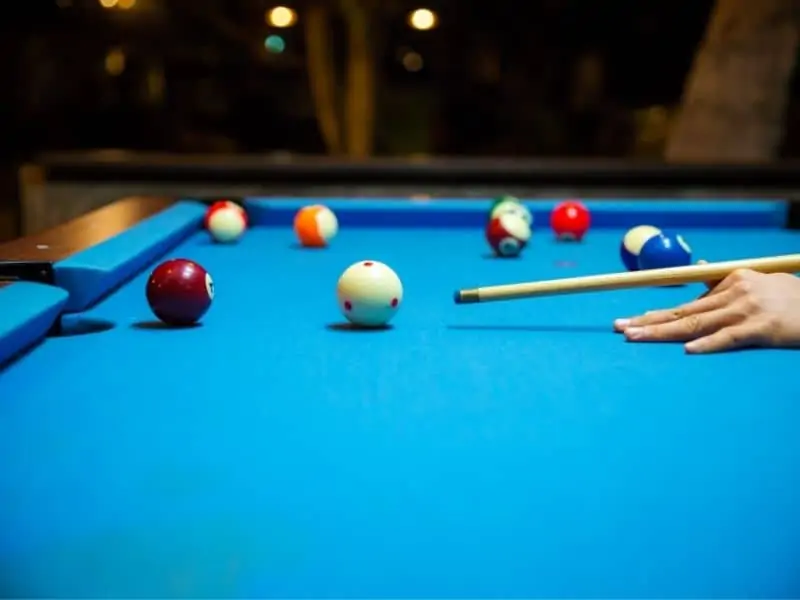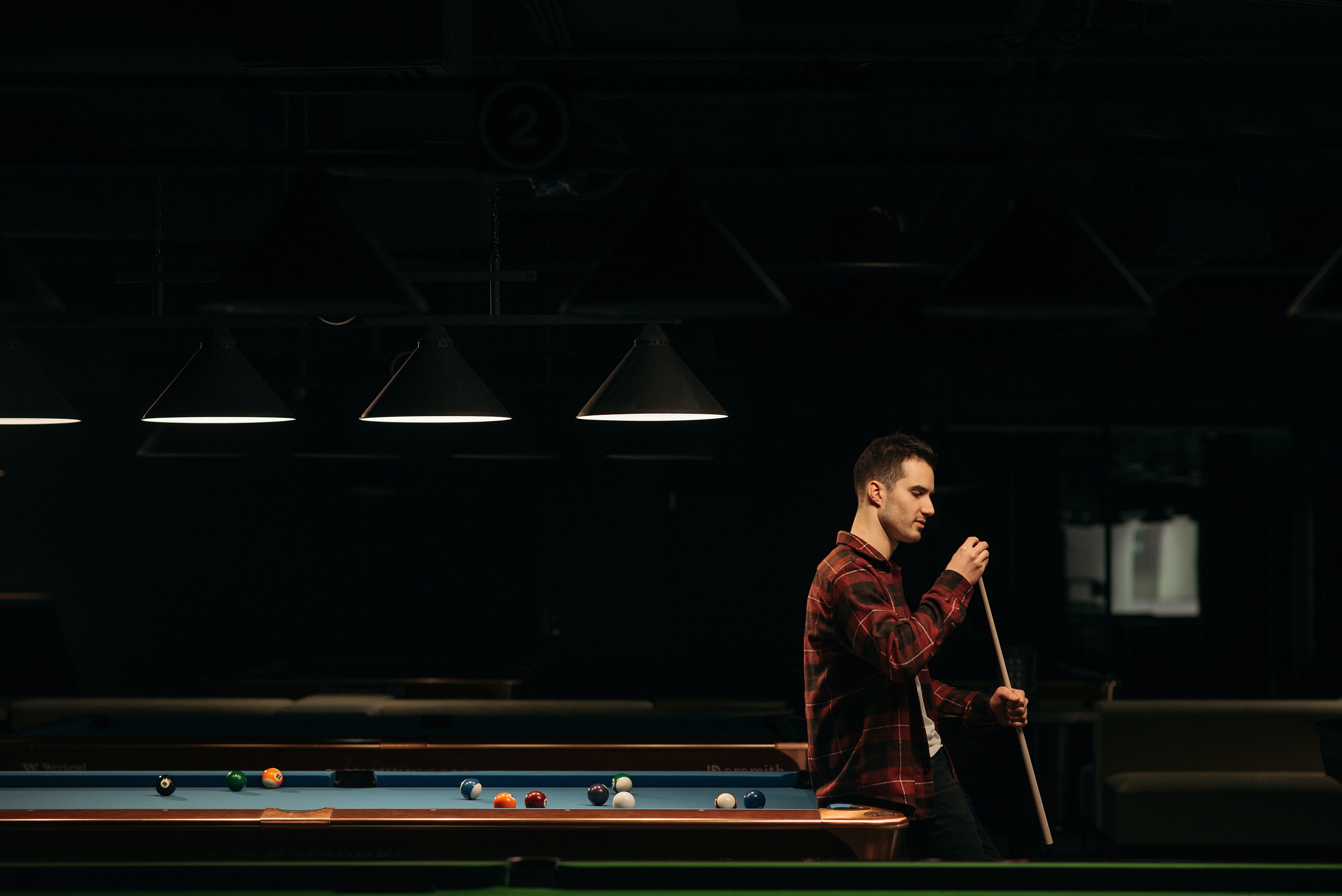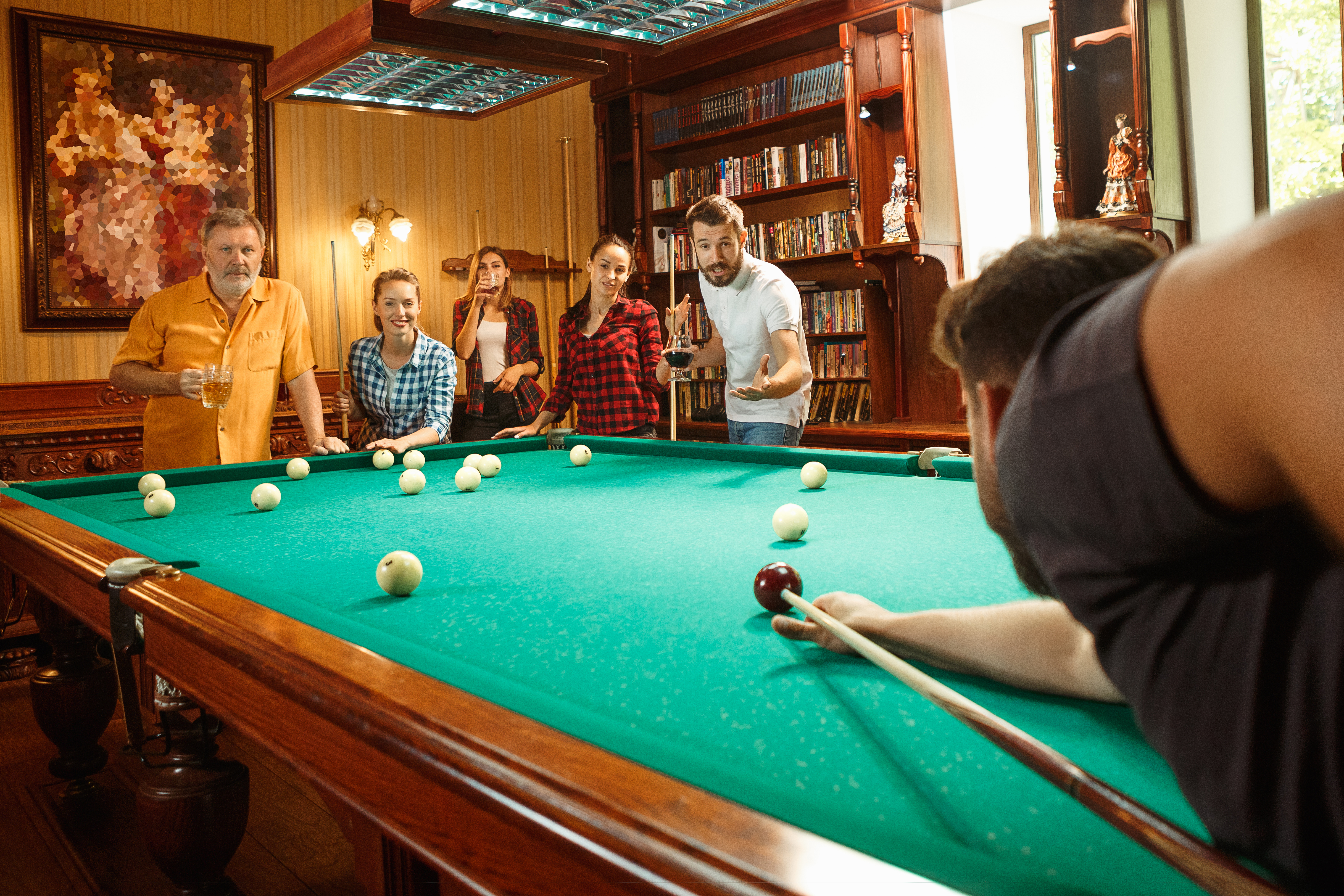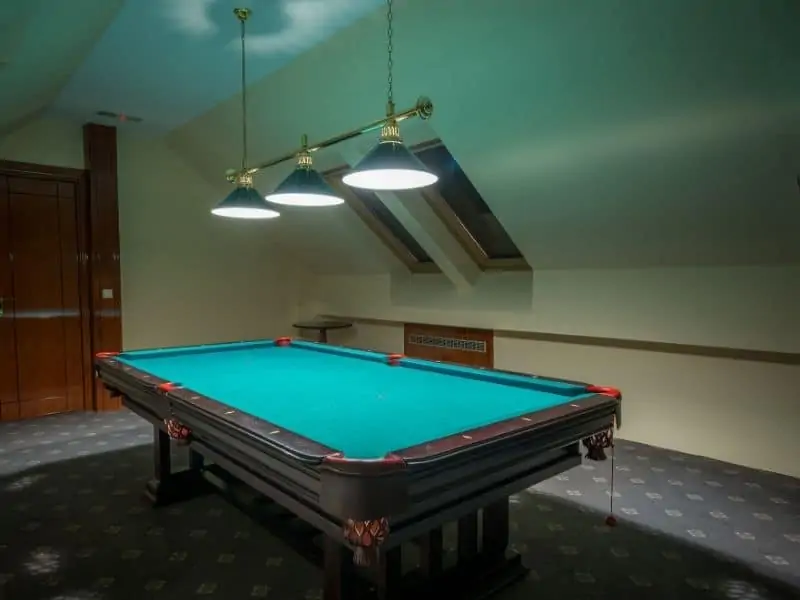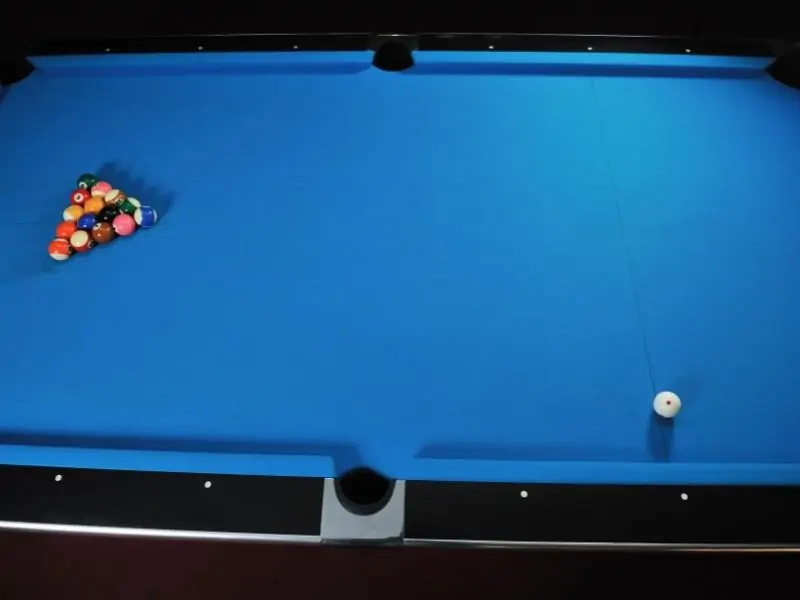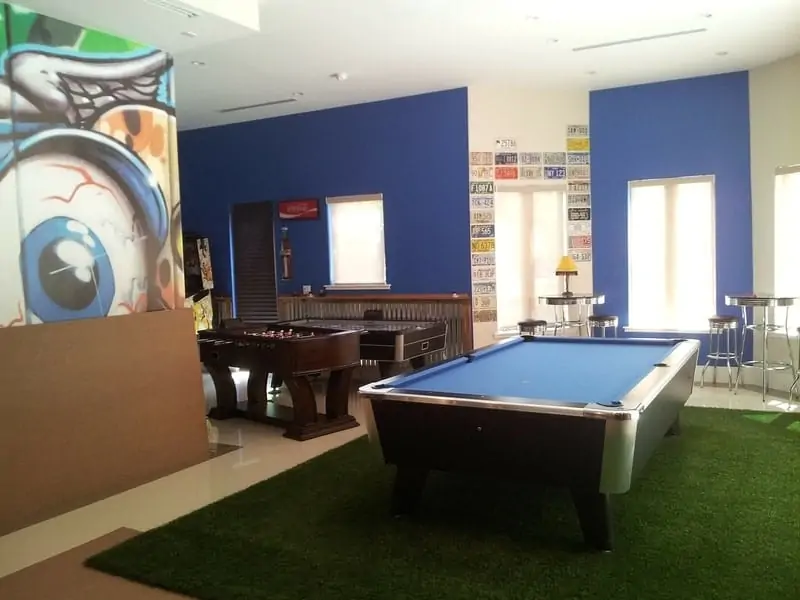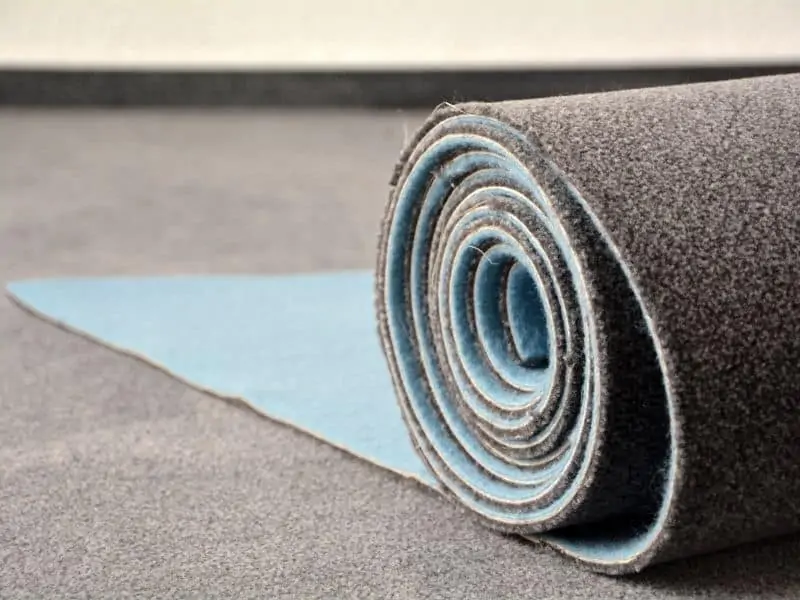There are many benefits to having your very own pool table in your house. You can play anytime you like, for as long as you like. You can invite friends over to play or have an epic match against yourself. Even better, you don’t have to go out and spend money at a bar or a pool hall (if you can even_find_a pool hall nearby). Unfortunately, not all of us have space in our homes to accommodate a full-size pool table.
For some, even a 7-foot table might be pushing it. But some worry that going any smaller means sacrificing the challenge. So with this article, I’ll answer the question, “Is a 6-foot pool table too small?”
While 6-foot pool tables are generally considered too small for more serious players, they are great for younger players just starting out and for adults who simply don’t have enough space for a larger table. The smaller playing field does make the game less difficult in some ways, but it also creates a new set of challenges that can keep players on their toes.
An Overview of Table Sizes
To get an idea of where 6-foot tables stand in the grand scheme of things, it’s helpful to compare them to the other available sizes. For our purposes, we’ll assume that each size is “regulation,” meaning its width is exactly half of its length.
Common Pool Table Sizes
| Size | Common Usage | Description |
|---|---|---|
| 7’ | Bar Boxes | Commonly found in bars |
| 8’ | In-Home Tables | Most popular in-home tables |
| 8.5’ | In-Home Tables | |
| 9’ | Professional Tournaments | Standard for tournaments |
Specialty and Uncommon Sizes
| Size | Common Usage | Description |
|---|---|---|
| 4’ - 6’ | At Home Rec and Limited Space Training | Suitable for recreational and small spaces |
| 10’ (Carom) | Carom Games | Standard size for carom games |
| 12’ (Snooker) | Snooker Games | Standard size for snooker games |
The most common sizes are 7’, 8’, 8.5’, and 9’. 7-foot tables are most commonly found in bars (they’re often referred to as “bar boxes”), 8 and 8.5-foot tables are the most popular in-home tables, and 9-foot tables are the standard for professional tournaments.
Less common “specialty” tables come in awide range of sizes, from 4’, 5’, and 6’ at the larger end down to as little as 20” at the miniature end. It’s rare to see tables larger than 9’ long (especially in the U.S./) except those designed for other billiards games like snooker and carom.
As you can see, 6-foot tables represent a sort of middle ground – they’re not quite full-size but they’re not quite mini. Click here for our complete guide on mini pool tables.
So let’s address a few of the most common questions people have about 6’ tables.
How Tall Are 6-Foot Pool Tables?
Most 6-foot tables are between 29 ¼-inches and 31-inches tall, which is the standard height range of all pool tables as dictated by the World Pool-Billiards Association. This means 6-foot tables are typically no shorter or taller than full-size tables. It’s not until you get into the range of tables made specifically for kids (5’ or smaller) that the height starts to go down.
Are the Balls Smaller and Lighter On a 6-Foot Pool Table?
Most 6-foot pool tables come with 6oz., 2.25-inch balls, which is the standard ball weight and size for full-size tables, but some do feature balls with a slightly smaller diameter, either 2-inches or 1 ⅞-inches. Smaller balls will likely also be lighter, usually around 5.5oz.
Ultimately, it will depend on the manufacturer and model. But even if the table comes with smaller or lighter balls, you can always buy aseparate set of standard balls.
What Size Room Do You Need for a 6-Foot Pool Table?
The amount of room you’ll need to play comfortably on a 6-foot pool table will depend on the length of your cues. But as a good baseline, if you’re using a typical 58” cue, you’ll need a room that’s 12’ 6” x 15’ 6”.
Many 6-foot tables come with shorter cues, from 57” all the way down to 52” or 48” – meaning you may be able to get away with putting the table in a smaller room, provided you’re comfortable using a shorter cue. For more on determining minimum room size, check outmy article on the subject.
What Kind of Player Are You?

One key factor in deciding whether or not a 6-foot table is big enough for you is your ultimate purpose and intention. In other words, are you playing mainly for recreation or competition?
If you’re a casual player who’s just looking to have some fun, a 6-footer will likely suit your needs just fine. And if you’re used to playing on bar boxes, moving down one size may be a little jarring at first but probably won’t require too much adjustment.
Likewise, 6-foot tables are ideal for kids aged anywhere from 8-18 who want to learn the game as they grow. The learning curve isn’t quite as steep as it is on a full-size table, which makes it easy for beginners to develop their skills and build confidence. They can then graduate to a larger table when they’re ready – without heaps of frustration.
If you’ve already been playing for a while and your goal is to enter tournaments, make money, or play professionally, a 6-foot table may not be the way to go. Pro tournaments are played on 9’ tables, so if you want to compete in that arena, you’ll need to spend plenty of time practicing on tables that size – or close to it.
How Table Size Affects Gameplay
The common concern that most players have with smaller tables is that it will make the game too easy. After all, the challenge is a huge part of the fun. But the reality is that while some things are easier on a 6-foot table, other things are actually harder.
Shot Length
The most obvious difference with a smaller table is that sinking shots will generally be easier. The less distance needs to be covered, the less precision and power are required. This also means that bank shots will be considerably easier to accomplish.
Clustering
One characteristic of smaller tables is that the balls tend to bunch together and hang out in clusters, even after a powerful break. There’s just not enough space for them to spread out very far. This isn’t exactly a negative, though – it just changes the dynamic of the game and can even add a new element of difficulty.Bank shots may become necessary to get around clusters; your strategy may need to allow your opponent to sink some of their balls just to get them out of the way; there may be more opportunities for defensive cue ball positioning, etc.
Ball Size & Weight
If playing on a 6’ table with lighter or smaller balls, the physics will be just a little different. Some players find it a little harder to be precise with these balls, which can make for a uniquely challenging experience, even for a fairly seasoned player.
Cost and Quality of 6’ Pool Tables
One great thing about 6-foot tables is their relatively low cost. They usually run anywhere from $300-$500 for a decent-quality model.
Most are made to be sturdy yet fairly portable – some even fold up for easy storage, which is a big selling point for many players who are short on space and can’t dedicate a room solely to playing pool. The Fat Cat Trueshot is a good example of such a table.

Others, like thisHathaway Spartan, feature a more permanent design, lacking the foldable legs, but are still lightweight enough to move around without much fuss.
Because most 6-foot pool tables have a playing surface made from MDF (medium-density fiberboard) and because they’re portable, they won’t be as precisely level and won’t last as long as a slate bed table. But they do still offer a great playing experience for those who just want to have fun and improve their skills.
Some manufacturers do make 6-foot slate bed tables, but they are usually around $3,000-$5,000 dollars, so a larger table may be a better investment if you have the space.
In Conclusion
6-foot tables are perfect for families because they’re large enough to be both fun and challenging for adults and small enough to give younger players a chance to grow up learning the game. They’re also great for casual players who want to have fun and practice at home but have limited space.
Players interested in turning pro will likely be better off buying a larger table to better match their skills with tournament-level equipment. However, 6-foot tables do offer unique challenges – and most pros do play on different sized tables to develop a more comprehensive skillset and, of course, just to have fun.
Other Articles You May Be Interested In:
- Best Pool Cues for the Money: Discover the top pool cues that offer great value without breaking the bank.
- Pool Table in the Garage? Here’s What You Need to Know: Understand the essential considerations for setting up a pool table in your garage.
- Break Cue vs Playing Cue: What’s the Difference?: Learn the key differences between break cues and playing cues to enhance your game.
- How Much Does a Good Pool Cue Cost?: Explore the factors that determine the cost of a high-quality pool cue.
- Are Mini Pool Tables Worth It? A Complete Guide: Read our comprehensive guide on mini pool tables and decide if they’re the right fit for you.
